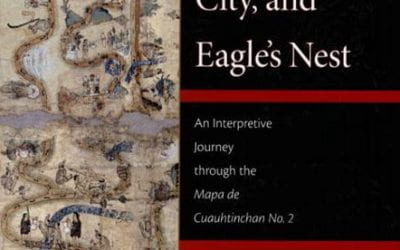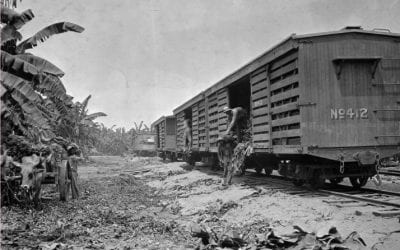The Sixties in Argentina
Political Repression, Cultural Vibrancy

“Eva Duarte de Perón (1947)” by Iberia Airlines is licensed under CC BY 2.0
In Argentina the Sixties arrived late. With mere glimpses of counter-culture and protest in the second half of the decade, those who participated in cultural and political change were silenced, forced underground or into exile by the mid-70s.
During all these years, Argentina was ruled by successive weak military regimes interrupted from time to time by duly elected also weak civilian governments, inevitably deposed by progressively more repressive military regimes. The pattern was established in September 1955, with the “ Revolución Libertadora,” led by General Eduardo Lonardi and Admiral Isaac Rojas, which put an end to Juan Domingo Perón’s second term in office.
Once in power, the armed forces decided to attack his supporters frontally and cleanse Argentina of all things Peronist. They erased his name and that of his wife, Evita, from buildings, monuments and territories; her embalmed body was abducted from the Confederación General de Trabajadores (CGT) headquarters and hidden; for a while the press was only allowed to refer to him as el tirano prófugo—“the fugitive tyrant.” Congress was closed; his party banned, his followers excluded from elections. Thousands were jailed. On June 9, 1956, a group of Perón’s followers, attempting to revolt, were summarily shot, including their leader, General Juan José Valle.
In 1958, Arturo Frondizi of the Intransigent Radical Civic Union was elected president with Peronist support, but was forced to resign in 1962. In September, disagreements within the army over anti-Peronist policies exploded into a violent confrontation in the streets of Buenos Aires. On April 2, 1963, former vice president Admiral Rojas led a Navy uprising opposing new presidential elections. Elections were nevertheless held and Arturo Illia, the candidate of the People’s Radical Civil Union, became president. He was deposed three years later by a military junta committed to carry out “la Revolución Argentina. ”
General Juan Carlos Onganía’s new government proceeded to ban all political parties and activity, jail politicians and labor leaders, once again closing Congress and even dismissing members of the Supreme Court. Considering the University of Buenos Aires as a hotbed of communist subversion, he closed its publishing offices and on July 29, 1966, known as la noche de los bastones largos—“the night of the long truncheons”—ordered soldiers to forcefully evict students and professors.
The miltary’s exclusionary anti-Peronist policies failed to distance Peronists from Perón. Peronists continued to resist with increasing violence and by the late 60s, they had begun to create guerrillla organizations, attracting young middle-class men and women who wanted to emulate the 1959 triumph of the Cuban revolution or show with the rising Marxist labor movement, or even saw their involvement as a way of implementing the changes in the Catholic Church after Vatican II.
Censorship was harsh under Onganía. He seemed to be particularly concerned about the length of young women’s miniskirts and the long hair of young men. Satire magazine Tia Vicenta was closed in July 1966 because it published a cartoon of Onganía as a walrus. In 1967, Aberto Ginastera’s opera, Bomarzo, based on a novel by Manuel Mujica Láinez about a sixteenth century nobleman was declared immoral and banned. Even the Instituto Di Tella, the most famous avant garde cultural center in Latin America, was closed because an art exhibit featuring urinals was deemed offensive.
Despite political conditions, Buenos Aires in the 60s was a culturally vibrant city. The Di Tella, founded in 1958 to modernize Argentine culture, offered the latest in modern art, while the Grupo Espartaco satisfied those who prefered a socially committed art. Borges continued to produce tirelessly, either alone or with Adolfo Bioy Casares; Julio Cortázar published three major novels, including Rayuela, (1963); Ernesto Sábato finished Sobre héroes y tumbas in 1961, and a young new writer, Manuel Puig, came out with two novels, La traición de Rita Hayworth (1968) and Boquitas Pintadas(1969). But the event that proved Buenos Aires cultural credentials of course was the 1967 publication of the Colombian writer Gabriel García Márquez’s Cien años de soledad by Editorial Sudamericana.
The heated debate begun in the 50s about the role of Peronism and post-Peronism, as well as the future of the left and liberalism in Argentina, continued. Sur, with somewhat diminished prestige, nevertheless formed part of the debate, although it was still unable to come to terms with the Peronist phenomenom. Pasado y Presente, founded in 1963, was therelevant political and intellectual group and would soon become a major international Marxist publication.
New modern magazines catered to the expanding middle class. The first, Primera Plana, founded by Jacobo Timerman, was a Newsweek clone that revolutionized Argentine journalism, covering national and international politics, arts, culture and lifestyles. It published famous foreign columnists and had a Modern Life section with information on contraceptives, changes in family life, women’s participation in the work force, the activities of the anti-war movement in the United States and the new music: rock and roll.
Notwithstanding the primacy of politics, the growing violence and the tastes of puritanical generals, young Argentines also began to listen to rock and roll. They created groups that imitated the Beatles and the Rolling Stones and played in a few Buenos Aires small cafes despite police repression. They managed to have a first concert in 1966, they had four in 1969, and began to record singles. Contrary to what happened in other Latin American countries, they decided very early on to sing in Spanish, compose their own songs and thus create un rock nacional. By the end of the 60s, they had succeeded. Silenced in the 70s, they reemerged in the early 80s to join the large mobilizations that sent the armed forces finally back to their barracks.
Marysa Navarro is a DRCLAS visiting scholar. She is the former president of the Latin American Studies Association, and Charles Collis Professor of History at Dartmouth College.
Related Articles
A Review of Inheriting the City: The Children of Immigrants Come of Age
As an immigrant trying to understand urban diversity here, I come back time and again to the U.S. writer E.B. White’s often-cited passage in Here is New York (1948) in search of useful clues. “There are roughly three New Yorks. There is, first, the New York of the man or woman who was born there, who takes the city for granted and accepts its size, its turbulence as natural and inevitable. Second, there is the New York of the …
A Review of Cave, City, and Eagle’s Nest: An Interpretive Journey through the Mapa de Cuauhtinchan No. 2
The publication of Cave, City, and Eagle’s Nest is an exceptional achievement, bringing into the light a tremendously important but formerly obscure Mesoamerican codex or pictographic text. Analogies to the (re)discovery and interpretation of the Dead Sea Scrolls are not unwarranted insofar as the book marks the reemergence of a fabulous and fabulously significant 500-year old document—the Mapa de Cuauhtinchan N…
Making A Difference: Repatriating Photographs
I first learned of the United Fruit Company’s operations in Colombia, like many people, when I read Gabriel García Márquez’s 100 Years of Solitude and its description of the 1928 massacre of banana workers in Santa Marta. A few years later, I was researching United Fruit for my dissertation, and was met with a wall of silence when I tried to contact the company to gain access to its records. Several other scholars including Philippe …




